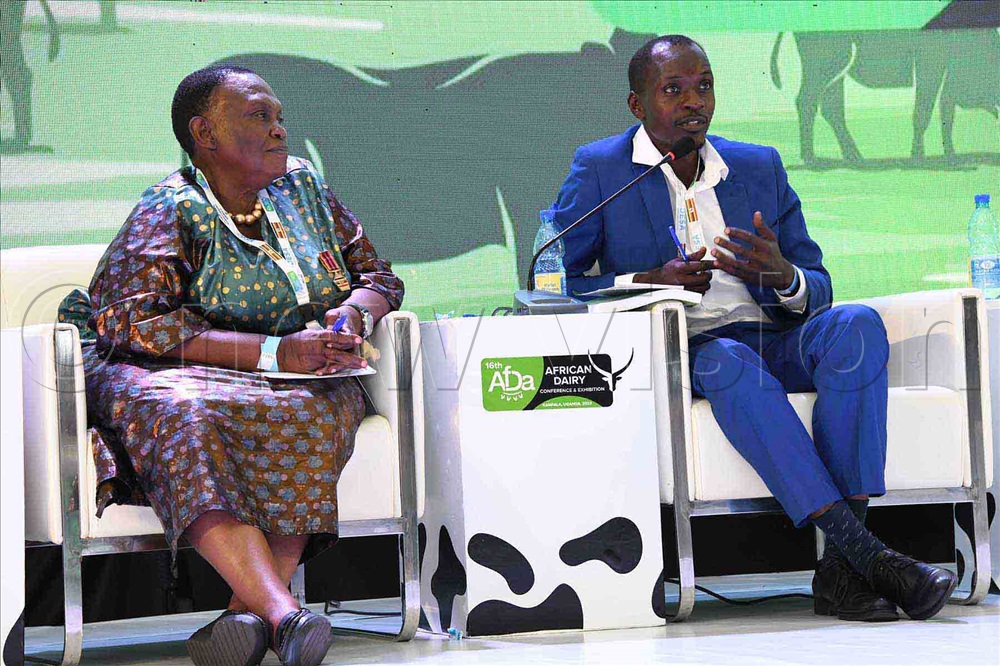By Joshua Kato
The milky-way is long and wide and while those walking along receive fair nutrition to their pockets, as Frank Tumwebaze, the Minister of Agriculture Animal Industry and Fisheries (MAAIF) pointed out, the target is to make it even wider and smoother!
“The President (Yoweri Museveni) has tasked us to pursue a target of 20 billion litres in the next few years,” Tumwebaze said.
The minister is hopeful that this can be achieved if the current level of adoption of better practices is maintained.

At the moment according to the minister, Uganda produces about 3.85 billion litres of milk per day. Tumwebaze was speaking during the 16th African Dairy Conference and Exhibition at Hotel Africana.
The event that started on Monday, September 11 ended on Friday, September 15. It drew delegates from 24 countries across the world.

Tumwebaze said that the emerging opportunities for example in North and West Africa, Europe and Asia call for an increase in production of not just quantities but also quality.
“We must continue innovating at an even faster rate than we are doing now. We must ensure that farmers are motivated to produce more by providing markets but also sensitizing them to adopting smart farming,” he said.

He called upon the sector regulators not to use prohibitive regulation to run the sector, but adopt pro-active measures.
According to Moses Nyabila, the Chief Executive Officer aBi Development Ltd, who also spoke at the conference on Tuesday, compared to the rest of the world, Uganda and generally Africa milk production remains low.
Milk production in Africa stands at 50 million tonnes which is only 6% of the world average production.

He says that out of this, only about 15% of the total milk produced is processed to standard products such as cheese, yoghurt, butter, etc.
“As a result of this deficit, Africa spends well over US$ 3b importing milk and milk products from other parts of the world,” Nyabila told the conference.
He said that given the natural resources available, upscaling production should not be a big challenge.

He, however, said that due to urbanisation, population growth and improving household incomes, demand for milk and milk products in the region is expected to continue to grow, offering opportunities to transform milk chains to economies of scale, improve milk quality and safety and promote the inclusion of more parties.
“This has led to both local and international players channelling huge investments in the sector in the past three years, towards upgrading facilities and systems, product innovations, expansions, technological advancements, among others,” Nyabila said.





